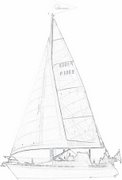Ou muito simplesmente a porta para baixo.
Retirado dos portos de Africa do Sul.A proposito,as placas, as plaquinhas e as outras maiorzinhas abundam por aqui. ´Já tenho outra na manga.
’ANTARCTIC GATEWAY’ PLAQUE UNVEILED AS SA AGULHAS BEGINS HER LAST JOURNEY TO THE ICE
The plaque commemorating the importance of Cape Town and the V&A as the Gateway to Antarctica. Picture by Pat Downing
Pena não falarem na minha novel viagem de exploração, nua prancha de windsurf; Sei que virei à esquerda, em vez de ir sempre para baixo, mas caramba.... Só por isso??!! Talvez fosse por ser " ligeiramente" após 1930; será disso?
Cape Town’s world famous V&A Waterfront is noted for its special and unique atmosphere and in particular for being a waterfront within a working harbour. But what it hasn’t so far capitalised on and marketed to its full potential is its great historical background and heritage, which is something that Captain Steven Bentley, the V&A Harbour Master, and the new owners of the V&A are keen to change.
What they apparently have in mind is the creation of a heritage trail through the waterfront, set out with a series of plaques in relevant places around the V&A, which would be used to help change this lack of historical information and local knowledge. The plaques could be connected to any interesting or important historical event or occasion that either Cape Town in general or the V&A in particular has been party to.
With this as a background, Captain Bentley in his capacity as V&A Harbour Master asked that an Antarctic Gateway plaque be unveiled to coincide with the final sailing of the South African Polar Supply ship, SA AGULHAS, which sailed on Thursday 8 December at 14h00 for the SANAE base Antarctica for the last time before being retired early in 2012.
The plaque unveiling ceremony took place just prior to the sailing of SA Agulhas, preceded by opening comments from the Director Southern Oceans & Antarctica Support of the Department of Environmental Affairs (DEA), Henry Valentine, who opened proceedings by talking about the importance of modern day South Africa’s place in Antarctica.
He was followed by the DEA’s director-general of Oceans & Coast, Dr Monde Mayakiso, who enlarged on the importance of Antarctica’s heritage before Captain Bentley outlined what the V&A wanted to achieve in this respect. It was then the turn of Jay Gates, vice-chairman of the SA Ship Society in Cape Town, a man with an expert knowledge of Antarctic expeditions. Gates was asked to present a suitable speech for the occasion which he did by way of a 5 minute talk on how special and important Cape Town was as an Antarctic Gateway, both historically and in present times.
This, he said, was unknown to most Capetonians and to virtually the whole of South Africa due to it having been of little interest and of no significance to previous administrations. Yet, Cape Town is the single most important city in the world in respect of its record of supporting exploration and research expeditions from 1739 onwards.
This applied especially in the opening up of Antarctica, including the epic voyages of Capt James Cook, the greatest maritime navigator and explorer of all time, who called at the Cape on no less than four times during his voyages of exploration.
He said that two of the greatest Antarctic seafarers of the ‘Golden Age’ of Antarctic exploration, John Fion MacLear and John King Davis, were themselves Capetonians.
Gates pointed out that the City of Cape Town Mayoral Committee has its own ‘Antarctic Gateway’ portfolio which is actively promoting Cape Town as the Gateway to Antarctica, along with the Department of Environmental Affairs and its Antarctic Division.
He then handed over to Captain William Leith, a retired SA Agulhas captain who served on her for 21 years, who unveiled the plaque.
The day on the East Pier had been special, with the ship being loaded with last minute stores and expedition members boarding the ship and an atmosphere that was charged with excitement and emotional farewells as some members of the expedition are to spend three months down at the base and others all of 14 months. The speech and unveiling of the plaque proved most informative as the history it revealed was not known by most people present on the dockside who were there to wave goodbye to the SA Agulhas as she set out on her final voyage down to the ice.


























































